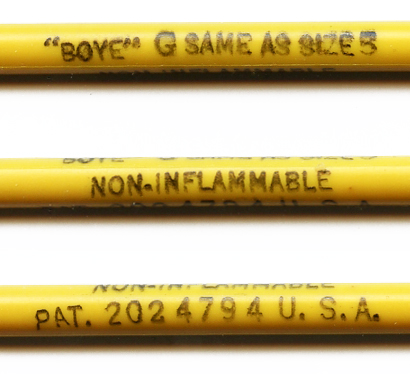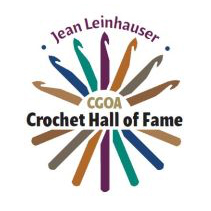By 1930, cellulose acetate along with specially designed compression molding equipment was available and began replacing celluloid for plastic crochet hooks. The main advantages of cellulose acetate over celluloid were that molding techniques were much faster and cellulose acetate was not flammable.
Like celluloid, cellulose acetate is naturally clear but can be made in any color or opacity. It is tough and flexible. It is easily machined and easily manipulated by hand when softened to 100 degrees C (212 degrees F, boiling). Because it is nonflammable, cellulose acetate was perfect for compression molding which was introduced in 1929 and, later, injection molding introduced in 1934.
About 1929 Tennessee Eastman, a subsidiary of Eastman Kodak, began selling sheets, rods, tubes, and molding powders of Tenite cellulose acetate. Boye began making injection molded crochet hooks out of Tenite. This is the substance the crochet hooks marked
are made from. These came in a wide variety of colors: white, red, yellow, translucent green, sky blue. Patent number 2024794 actually refers to the shape of the hook which is square in cross section. Many other hook manufacturers used cellulose acetate also.


